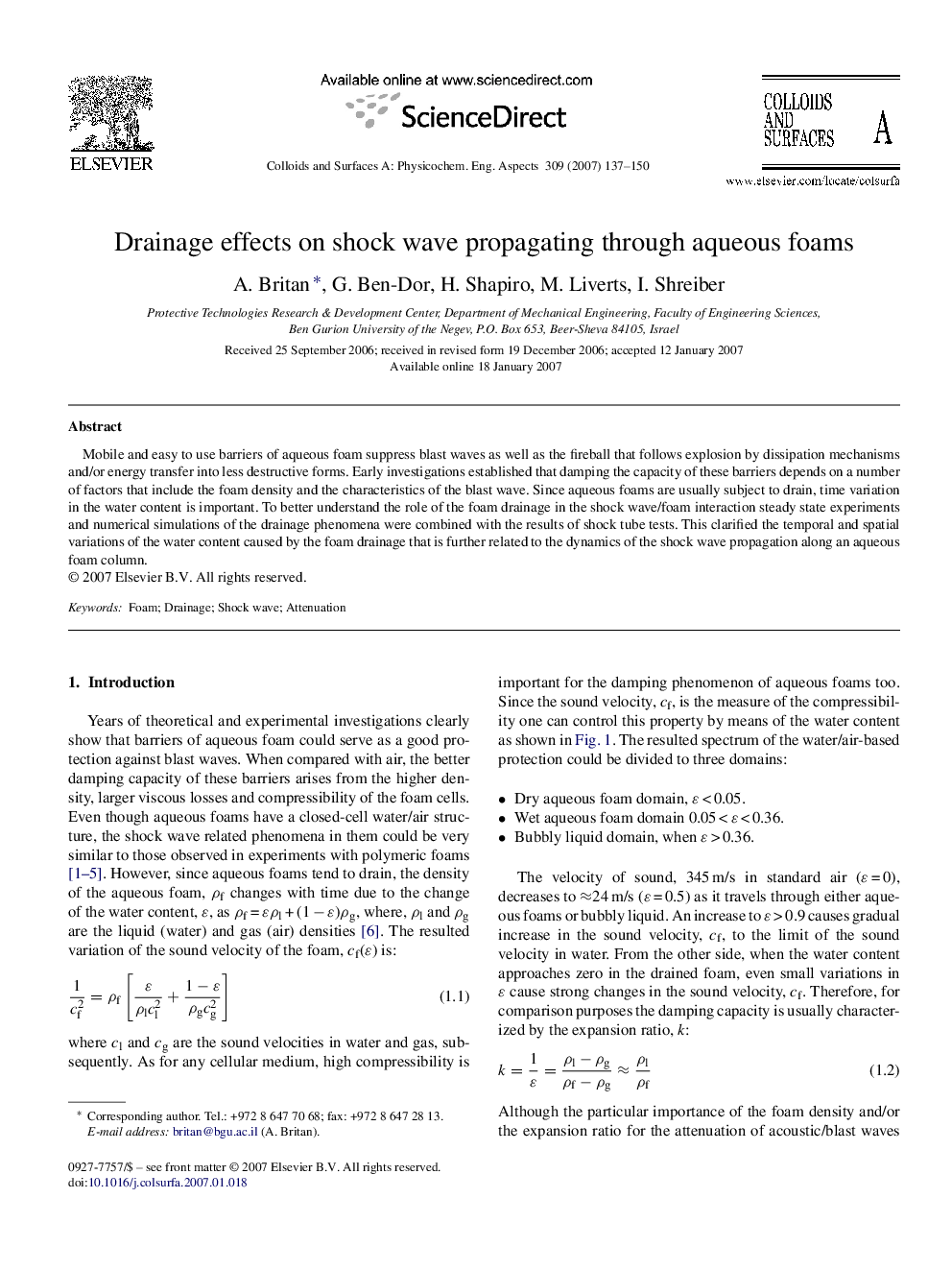| Article ID | Journal | Published Year | Pages | File Type |
|---|---|---|---|---|
| 597290 | Colloids and Surfaces A: Physicochemical and Engineering Aspects | 2007 | 14 Pages |
Abstract
Mobile and easy to use barriers of aqueous foam suppress blast waves as well as the fireball that follows explosion by dissipation mechanisms and/or energy transfer into less destructive forms. Early investigations established that damping the capacity of these barriers depends on a number of factors that include the foam density and the characteristics of the blast wave. Since aqueous foams are usually subject to drain, time variation in the water content is important. To better understand the role of the foam drainage in the shock wave/foam interaction steady state experiments and numerical simulations of the drainage phenomena were combined with the results of shock tube tests. This clarified the temporal and spatial variations of the water content caused by the foam drainage that is further related to the dynamics of the shock wave propagation along an aqueous foam column.
Keywords
Related Topics
Physical Sciences and Engineering
Chemical Engineering
Colloid and Surface Chemistry
Authors
A. Britan, G. Ben-Dor, H. Shapiro, M. Liverts, I. Shreiber,
